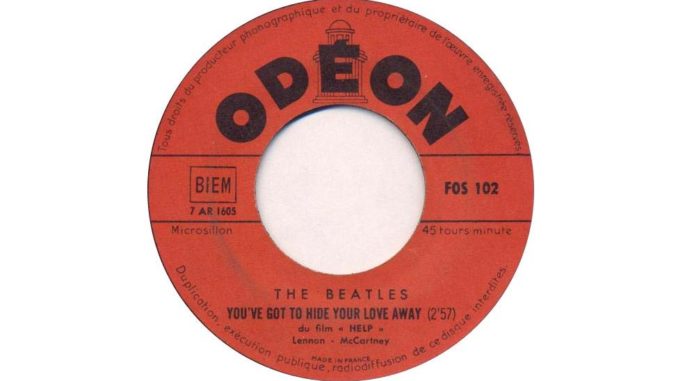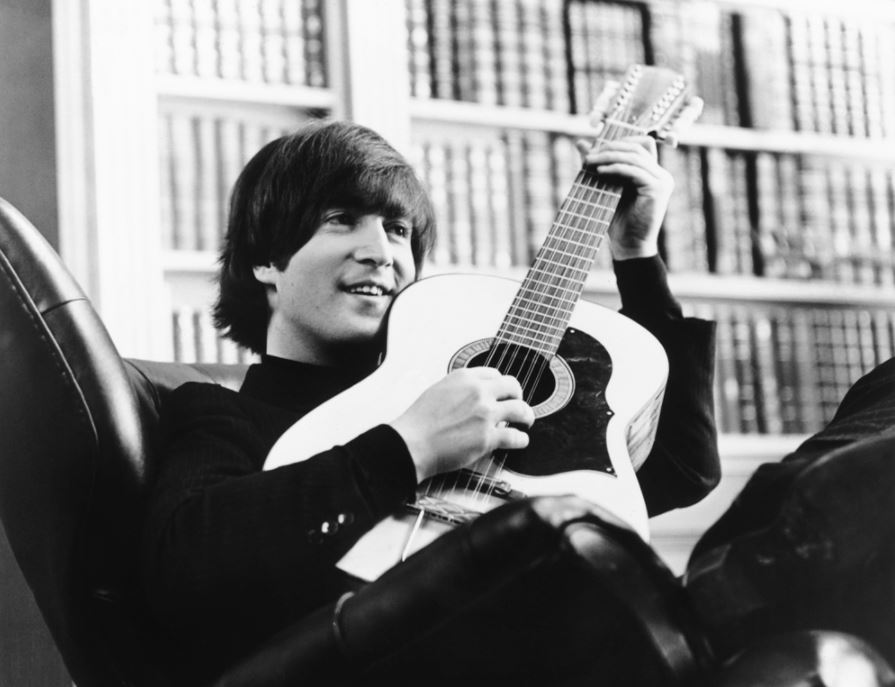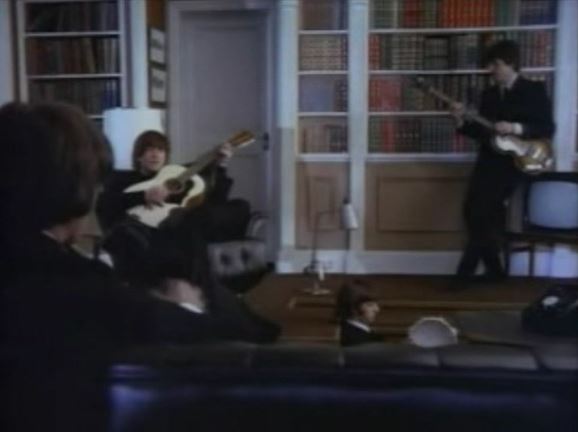
You’ve Got To Hide Your Love Away was recorded on 18th February 1965, and is prominently featured on the album and in the movie Help! released the same year. The movie premiered on 29 July 1965, with the album following a little over a week later on 6 August.
The song has the distinction of being the first wholly acoustic Beatle recording. It was also the first time they enlisted an outside musician (excluding George Martin, and also Alan White who played drums on Love Me Do before Ringo was fully on board/established). Johnny Scott was a regular arranger and performer for EMI, and came in to play flute on the track. Sadly for him there was no credit to be gotten on the record sleeve, but this nearly ever happened in the 1960s. Scott came in and performed a simple, extremely fitting and very touching solo for two flutes, got the standard fee (six pounds) and left.
John Lennon told Rolling Stone in 1971 that when he wrote this, he was just knocking out pop songs, without expressing his own personal emotions to any great extent. He explained: “I was in Kenwood [his home at the time] and I would just be songwriting. The period would be for songwriting and so every day I would attempt to write a song and it’s one of those that you sort of sing a bit sadly to yourself, ‘Here I stand, head in hand…'”

Lennon never hid the fact that he was very inspired by Bob Dylan at this time. Musically, this was a song that would have fit very well on any Dylan album from the same period. Still in 1971, he recalled: “I started thinking about my own emotions – I don’t know when exactly it started like I’m A Loser or Hide Your Love Away or those kind of things – instead of projecting myself into a situation I would just try to express what I felt about myself which I’d done in me books. I think it was Dylan who helped me realise that – not by any discussion or anything but just by hearing his work – I had a sort of professional songwriter’s attitude to writing pop songs; he would turn out a certain style of song for a single and we would do a certain style of thing for this and the other thing. I was already a stylised songwriter on the first album. But to express myself I would write [the books] Spaniard in the Works or In His Own Write, the personal stories which were expressive of my personal emotions. I’d have a separate songwriting John Lennon who wrote songs for the sort of meat market, and I didn’t consider them – the lyrics or anything – to have any depth at all. They were just a joke. Then I started being me about the songs, not writing them objectively, but subjectively.”
Some have claimed that the lyric of the song refers to Lennon’s hidden homosexuality – more explicitly his holiday in Spain with Brian Epstein by spring 1963. The amount of write-ups and speculation surrounding this is incredible (and just an internet search away, if you’re curious). Frankly, I find it hard to believe as Lennon was known for his (early) antipathy towards sexual deviants, and in particular homosexuals. He likely said many intensely insensitive things to Brian during those early years before he learnt more about it and expanded his viewpoints – which he indeed may have done because of Brian.
The other theory that the lyric might in part be about Brian Epstein may be closer to the truth, and the despair that Epstein might often have felt:
If she’s gone I can’t go on
Feeling two foot small
Everywhere people stare
Each and every day
I can see them laugh at me
And I hear them say
Hey! You got to hide your love away
Homosexuality was a punishable offense in Britain until the 1970s, and definitely something that needed to be hid.
The fact that this song is used in the official Anthology documentary in the sections dealing with Epstein’s homosexuality and death gives credence to the idea that this song was linked to Brian, and possibly even a song about hiding one’s homosexuality. Then again, maybe the words just fit. It is also probably one of few poignant Beatle songs that would have fit such a segment, so maybe we shouldn’t read too much into those aspects. Lennon never acknowledged any secret meanings in the song, and so perhaps neither should we.
Incidentally, the line “feeling two foot small” was initially written “feeling two foot tall.” Lennon sang it wrong but liked it and left it that way.

For all of the potential drama and various things one could read into the lyrics, it certainly has a very relaxed atmosphere which also fits the casual performance in the movie: Lennon was leaning back into a chair with the guitar lying on his belly as he played and sang, with the other three seemingly randomly placed elsewhere in the room. Ringo sat in a sunken bed looking like he would fall back at any moment, Paul was leaning against a book shelf, while George was strategically placed in a sofa next to a lovely woman. McCartney had his usual Hofner-bass around his neck, but that must have been a group image consideration as no bass was used on this recording.
It’s also part of the story that Lennon’s close friend Pete Shotton can claim the credit for suggesting the “Hey!” in the choruses. The song seemed to need an extra syllable at that point and it was quickly slotted in.
The song was recorded in less than two hours. Although they attempted several takes, the group only played through the full song twice. The only other full non-album take (take 5) can be found on Anthology 2. Like the final version it is also very charming, but lacks the fine vocal phrasing of the album version which heightens the Dylan-factor.
You’ve Got To Hide Your Love Away was Lennon at his most folk-rock, and he was keen to send a signal that Dylan wasn’t the only one who could conjure up magical songs on the acoustic guitar. The melody is lovely, tender and even vulnerable, which go hand in hand with the sentiment of a love that has to be kept away; hidden from the masses. Independent of how personal the song was or wasn’t to Lennon, it still becomes a touching and very vulnerable song which signalled a new direction for Lennon as a lyricist where he at least appeared to bare his soul a bit more – sometimes genuinely so. Look no further than the title track of that same album for an example.
Despite being a featured song in the film and often being considered a firm fan favourite, it was not found worthy of a single release. At least not as an A-side, but it was used on several B-sides – including the chart-topping Yesterday.

Facebook Comments